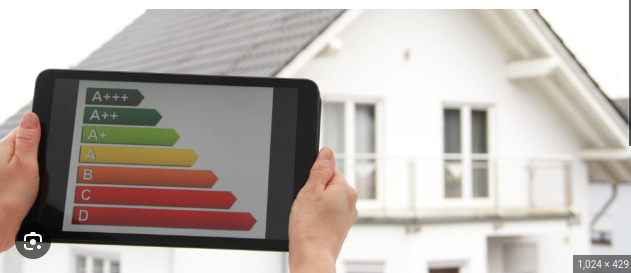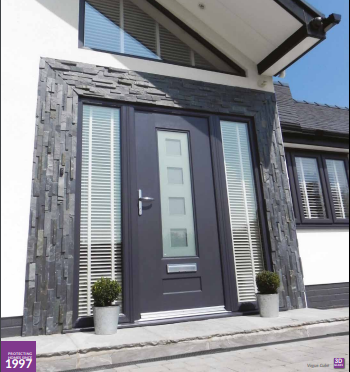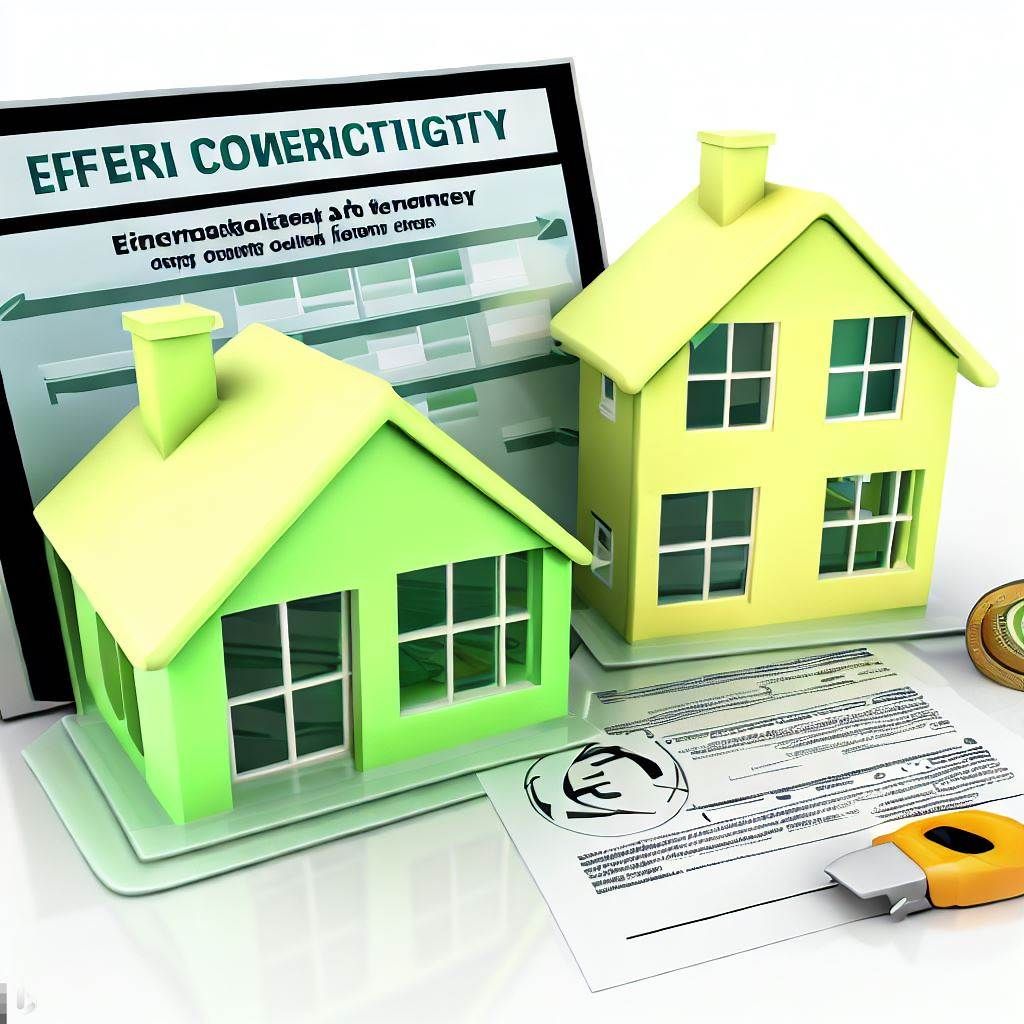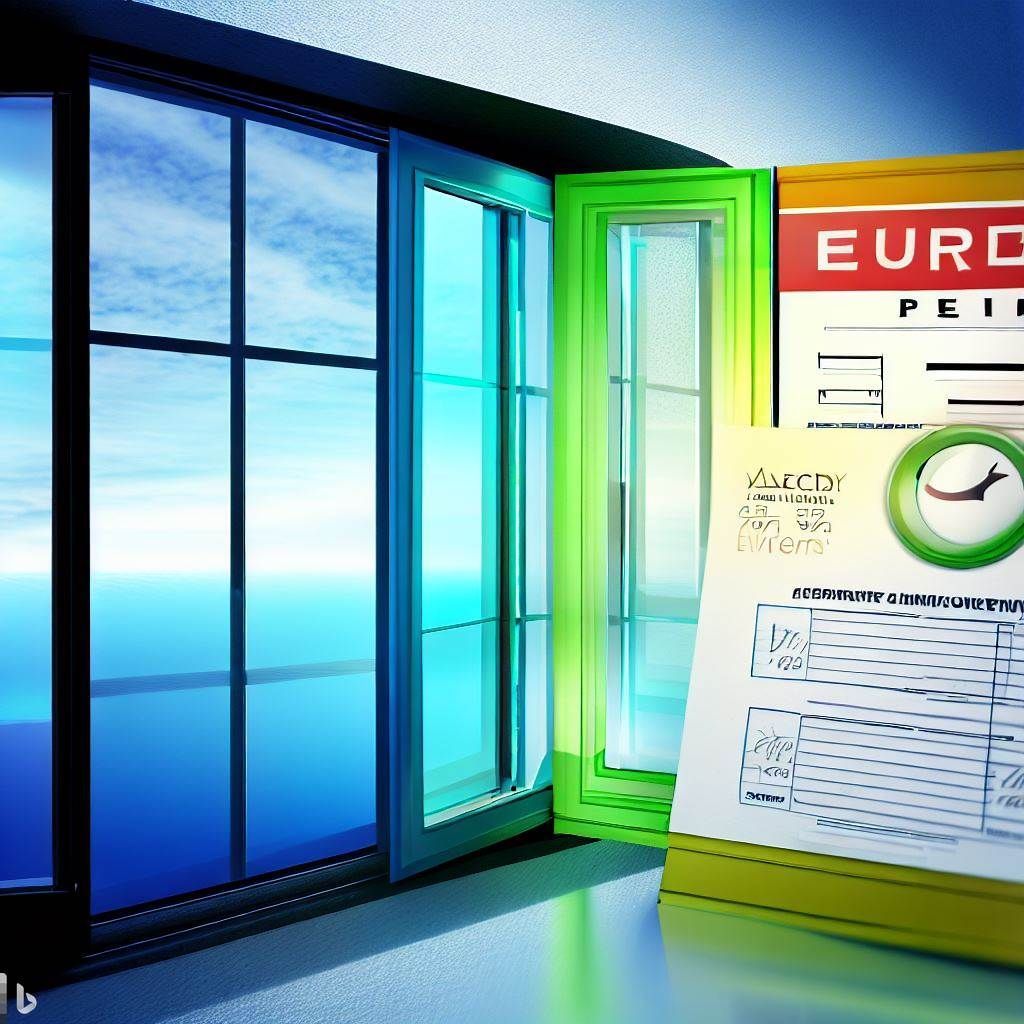My Ultimate Guide to Composite Doors In 2023
Here, I provide you with the Ultimate Guide to Composite Doors.

Introduction
Composite doors have emerged as one of the most sought-after choices for homeowners seeking durability, style, and security. Combining the best features of various materials, composite doors offer a winning combination of aesthetics, strength, and energy efficiency. In this comprehensive guide, we will explore everything you need to know about composite doors, including their construction, benefits, customisation options, and maintenance tips.
A Quick Overview of My Ultimate Composite Door Guide
Section 1: Understanding Composite Doors
Composite doors are a modern alternative to traditional wooden and uPVC doors. They are made from a blend of materials such as uPVC, wood, insulating foam, and glass reinforced plastic (GRP). This unique combination of materials results in a door that is not only visually appealing but also highly durable and energy-efficient.
Section 2: Benefits of Composite Doors
Composite doors offer numerous advantages over other types of doors. This section will highlight the key benefits of choosing composite doors for your home, including enhanced security, excellent insulation properties, low maintenance requirements, and a wide range of customisable designs.
Section 3: Construction of Composite Doors
This section will delve into the construction process of composite doors, explaining how the different materials are layered and bonded together. It will cover topics such as the role of uPVC in reinforcing the door frame, the insulating properties of the foam core, and the strength and durability provided by the GRP outer skin.
Section 4: Design and Customisation Options
Composite doors offer a wealth of design and customisation options to suit any home style or personal preference. This section will explore the various choices available, including different colours, finishes, glazing options, and door hardware. It will also discuss the importance of selecting the right style and design that complements the overall aesthetics of your home.
Section 5: Enhanced Security Features
Security is a top priority for homeowners, and composite doors excel in this area. This section will highlight the robust security features of composite doors, such as multipoint locking systems, anti-drill and anti-pick cylinders, and high-impact resistance. It will explain how these features contribute to making composite doors an excellent choice for keeping your home safe and secure.
Section 6: Energy Efficiency
With increasing energy costs and environmental concerns, energy efficiency is a crucial consideration for homeowners. Composite doors are designed to provide excellent thermal insulation, helping to keep your home warm in winter and cool in summer. This section will explain the energy-saving benefits of composite doors and how they can contribute to reducing your carbon footprint.
Section 7: Maintenance and Care
Composite doors require minimal maintenance compared to traditional wooden doors. This section will provide useful tips on how to care for your composite door, including cleaning techniques, avoiding damage, and periodic inspections to ensure its longevity and performance.
Section 8: Composite Doors vs. Other Door Types
In this section, we will compare composite doors with other popular door types, such as wooden doors and uPVC doors. We will discuss the advantages and disadvantages of each type, enabling you to make an informed decision when choosing the right door for your home.
Conclusion
Composite doors have revolutionised the door industry, offering a winning combination of durability, style, and security. By understanding the construction, benefits, customisation options, and maintenance requirements of composite doors, you can make a well-informed decision for your home. Invest in a composite door, and enjoy the perfect blend of aesthetics, functionality, and peace of mind for years to come.
Section 1: Understanding Composite Doors
Composite doors have gained significant popularity in recent years, and for good reason. Understanding their composition and construction is essential for appreciating their unique qualities and advantages.
1.1 Composition of Composite Doors
Composite doors are crafted using a combination of materials carefully selected for their individual strengths. The primary components of composite doors include:
a) uPVC (Unplasticised Polyvinyl Chloride): uPVC is used to reinforce the door frame and provide structural integrity. This durable and low-maintenance material enhances the overall strength and stability of the door.
b) Wood: The inclusion of a timber core adds robustness and insulation to composite doors. This inner layer is typically composed of high-density particleboard or laminated timber, enhancing the door's strength and thermal efficiency.
c) Insulating Foam: A layer of insulating foam is injected within the door structure. This foam not only enhances thermal insulation but also adds soundproofing properties, contributing to a quieter and more comfortable living environment.
d) Glass Reinforced Plastic (GRP): The outer layer of composite doors consists of a GRP skin. GRP is a composite material made of a strong fibreglass matrix combined with a durable resin. This outer layer provides exceptional strength, weather resistance, and resistance to scratches and dents.
1.2 Advantages of Composite Doors
Composite doors offer a range of benefits that set them apart from other door options:
a) Durability: The combination of uPVC, wood, insulating foam, and GRP results in a door that is highly resistant to warping, cracking, and twisting. Composite doors can withstand the rigours of daily use and adverse weather conditions, maintaining their structural integrity for many years.
b) Thermal Efficiency: The insulating foam core and the timber layer contribute to excellent thermal efficiency. Composite doors minimise heat loss, reducing energy consumption and saving on heating costs. They also help to keep your home comfortable by preventing drafts and cold spots.
c) Security: Composite doors are renowned for their exceptional security features. The combination of robust materials, multi-point locking systems, and reinforced frames makes them highly resistant to forced entry. Additionally, anti-drill and anti-pick cylinders further enhance their security capabilities.
d) Low Maintenance: Unlike traditional wooden doors, composite doors do not require regular sanding, painting, or varnishing. They are resistant to fading, rotting, and warping, making them virtually maintenance-free. A simple wipe down with a mild detergent and occasional lubrication of moving parts is usually sufficient to keep them in excellent condition.
e) Aesthetic Appeal: Composite doors offer a wide range of design options to suit various architectural styles and personal preferences. They are available in an array of colours, finishes, glazing choices, and decorative panel designs. Whether you prefer a classic or contemporary look, there is a composite door design to enhance the visual appeal of your home.
f) Weather Resistance: The GRP outer skin of composite doors provides exceptional weather resistance. It effectively shields the door from rain, wind, and UV rays, preventing fading and deterioration over time. Composite doors are built to withstand even the harshest weather conditions, ensuring long-lasting performance and beauty.
Understanding the composition and advantages of composite doors allows homeowners to appreciate the superior qualities they offer. From durability and thermal efficiency to security and low maintenance, composite doors combine the best features of various materials to provide a reliable and visually appealing entrance solution.
Section 2: Benefits of Composite Doors
Composite doors have become increasingly popular among homeowners due to their numerous benefits. In this section, we will explore the advantages of choosing composite doors for your home.
2.1 Enhanced Security
Security is a top concern for homeowners, and composite doors excel in providing robust protection. The combination of sturdy materials, such as uPVC, wood, and GRP, creates a door that is highly resistant to forced entry. Composite doors often feature multi-point locking systems, which engage multiple bolts into the door frame, making it extremely difficult for intruders to break in. Furthermore, anti-drill and anti-pick cylinders add an extra layer of security, preventing common break-in methods. With a composite door, you can have peace of mind knowing that your home is well-protected.
2.2 Excellent Insulation
One of the standout features of composite doors is their exceptional insulation properties. The insulating foam core and timber layer within the door structure provide effective thermal insulation. This means that composite doors minimise heat transfer, helping to keep your home warm during winter and cool during summer. By reducing heat loss, composite doors contribute to energy efficiency, resulting in lower heating and cooling costs. Moreover, their insulating properties also help to minimise noise transmission, creating a quieter and more peaceful living environment.
2.3 Low Maintenance Requirements
Unlike traditional wooden doors that require regular maintenance such as sanding, painting, or varnishing, composite doors are designed to be low maintenance. The durable materials used in their construction, such as uPVC and GRP, are resistant to fading, rotting, and warping. Composite doors do not require repainting or resealing, saving you time and effort. A simple wipe down with a mild detergent and occasional lubrication of moving parts, such as hinges and locks, is usually sufficient to keep them in excellent condition. This makes composite doors an attractive option for homeowners looking for hassle-free solutions.
2.4 Customisation Options
Composite doors offer a wide range of design and customisation options, allowing you to create a door that suits your personal style and complements the aesthetics of your home. They are available in various colours, finishes, and glazing options, enabling you to achieve the desired look. Whether you prefer a traditional or contemporary design, there are numerous panel styles, including decorative glass options, to choose from. Additionally, composite doors can be further personalised with the selection of door hardware, such as handles, letterplates, and knockers. With such flexibility, you can create a unique and eye-catching entrance for your home.
2.5 Durability and Longevity
Composite doors are built to last. The combination of materials, including uPVC, wood, insulating foam, and GRP, results in a door that is highly durable and resistant to wear and tear. They are designed to withstand the elements, including harsh weather conditions, without deteriorating or losing their functionality. Composite doors are less prone to warping, cracking, and twisting compared to traditional wooden doors. This durability ensures that your composite door will continue to perform well and maintain its appearance for many years, making it a worthwhile investment for your home.
2.6 Enhanced Curb Appeal
The aesthetic appeal of composite doors is another significant advantage. With a wide range of styles, colours, and finishes available, composite doors can enhance the overall curb appeal of your home. Whether you have a contemporary or period-style property, you can find a composite door design that complements the architectural features. The ability to customise the door's appearance allows you to create a welcoming entrance that reflects your personal taste and adds value to your home.
2.7 Environmentally Friendly
Composite doors contribute to environmental sustainability. The energy-efficient properties of composite doors help reduce energy consumption, lowering your carbon footprint. By minimising heat loss, composite doors decrease the need for excessive heating or cooling, resulting in reduced energy usage. Additionally, the materials used in composite doors, such as uPVC and GRP, are recyclable, making them an eco-friendly choice. By opting for composite doors, you can make a positive impact on the environment while enjoying the benefits they offer.
In summary, composite doors offer a range of benefits that make them an excellent choice for homeowners. Enhanced security, excellent insulation, low maintenance requirements, customisation options, durability, enhanced curb appeal, and environmental sustainability are among the key advantages. By selecting a composite door, you can enjoy a secure, energy-efficient, and visually appealing entrance to your home that requires minimal upkeep and provides long-lasting performance.
Section 3: Construction of Composite Doors
Understanding the construction of composite doors is essential for appreciating their unique qualities and understanding why they excel in terms of durability, strength, and energy efficiency. In this section, we will delve into the details of how composite doors are constructed.
3.1 Layered Construction
Composite doors are meticulously crafted using a layered construction technique, where each component plays a vital role in the door's overall performance and durability. The key layers of a composite door include the uPVC frame, the timber core, the insulating foam, and the GRP outer skin.
3.2 uPVC Frame
The foundation of a composite door lies in its uPVC (Unplasticised Polyvinyl Chloride) frame. uPVC is a durable and rigid material known for its strength, weather resistance, and low maintenance requirements. The uPVC frame serves as the structural backbone of the door, providing stability and support. It also acts as a thermal barrier, preventing heat transfer and contributing to the door's energy efficiency.
3.3 Timber Core
The next layer of a composite door is the timber core, which is typically constructed using high-density particleboard or laminated timber. This layer adds strength, stability, and insulation to the door. The timber core enhances the door's overall durability while also providing excellent thermal performance. It helps to prevent heat loss, keeping your home warm and energy-efficient.
3.4 Insulating Foam
The composite door's insulating foam layer is situated within the timber core. This layer is typically made of high-quality polyurethane foam, which has excellent insulation properties. The insulating foam acts as a thermal barrier, reducing heat transfer through the door. It helps to maintain a comfortable temperature inside your home by preventing drafts and cold spots. Additionally, the foam core contributes to soundproofing, reducing external noise intrusion.
3.5 GRP Outer Skin
The outer layer of a composite door consists of a Glass Reinforced Plastic (GRP) skin. GRP is a composite material composed of a strong fibreglass matrix combined with a durable resin. This outer skin is highly resistant to impact, weather, scratches, and dents. It provides exceptional durability and protection, ensuring that the door maintains its appearance and functionality over time. The GRP skin is available in a variety of finishes and can be designed to mimic the texture and appearance of traditional wooden doors, offering a visually appealing option without the associated maintenance requirements.
3.6 Bonding and Lamination
The various layers of a composite door are bonded and laminated together to create a solid and robust structure. High-strength adhesives are used to ensure a secure and permanent bond between the components. This lamination process reinforces the door's strength and stability, making it highly resistant to warping, twisting, and cracking. The careful assembly of the layers ensures that the composite door remains durable and reliable, even in demanding environments.
3.7 Hardware and Accessories
In addition to the layered construction, composite doors feature high-quality hardware and accessories to enhance functionality and security. Multipoint locking systems, consisting of multiple bolts engaging with the door frame, provide superior security, making it difficult for intruders to force the door open. The hinges, handles, letterplates, and other hardware components are designed to complement the door's aesthetics while ensuring smooth operation and longevity.
By combining uPVC, timber, insulating foam, and GRP in a layered and bonded construction, composite doors achieve a balance of strength, durability, insulation, and aesthetic appeal. The careful selection and integration of these materials and components result in a door that offers exceptional performance, energy efficiency, and long-lasting durability for your home.
Understanding the construction process of composite doors helps homeowners appreciate the craftsmanship and engineering that goes into creating these high-quality entrance solutions. With their layered composition and attention to detail, composite doors provide a secure, energy-efficient, and visually appealing option that stands the test of time.
Section 4: Design and Customisation Options
One of the standout features of composite doors is their versatility in design and customisation options. Whether you're aiming for a traditional, contemporary, or unique look, composite doors offer a wide range of choices to suit your personal style and complement the aesthetics of your home. In this section, we will explore the design and customisation options available for composite doors.
4.1 Door Styles and Panel Designs
Composite doors come in various styles, allowing you to choose the design that best suits your home's architecture. Whether you have a modern, Victorian, Georgian, or cottage-style property, there is a composite door design to complement it. The door styles range from simple and sleek to more ornate and traditional options.
Furthermore, composite doors offer a selection of panel designs. These panels can be plain or feature decorative patterns, raised mouldings, or glass inserts. You can choose from different panel configurations, such as full-length panels, half panels, or panels with top lights or side lights. The panel design adds character and visual interest to the door, allowing you to create a unique and personalised entrance.
4.2 Colours and Finishes
Composite doors are available in a wide range of colours and finishes, allowing you to customise the appearance to suit your preferences and complement your home's exterior. Whether you prefer a classic white, a bold statement colour, or a wood-effect finish, there are options to cater to every taste. The colour and finish you choose can significantly impact the overall look and curb appeal of your home.
In addition to solid colours, composite doors also offer wood-effect finishes that mimic the appearance of traditional wooden doors. These finishes capture the natural grain and texture of wood while providing the durability and low maintenance of composite materials. Wood-effect finishes are an excellent choice for those who desire the timeless elegance of wood without the associated upkeep.
4.3 Glazing Options
Glazing plays a significant role in the overall design and functionality of composite doors. Composite doors offer a variety of glazing options, allowing you to incorporate natural light while maintaining privacy and security. You can choose from different types of glass, such as clear, frosted, patterned, or decorative glass, to achieve the desired level of transparency and aesthetic appeal.
4.4 Door Hardware
Door hardware is an important aspect of composite door customisation, both in terms of functionality and style. Composite doors come with a wide range of hardware options to choose from, including door handles, letterplates, knockers, and locks. These hardware components are available in various finishes, such as chrome, brass, or black, allowing you to match the hardware to your desired aesthetic.
The choice of door hardware can significantly impact the overall look and feel of your composite door. Whether you prefer a traditional, contemporary, or minimalist style, there are hardware options available to complement your chosen design.
4.5 Side Panels and Top Lights
To further enhance the design and visual impact of your entrance, composite doors can be accompanied by side panels and top lights. Side panels are additional vertical glass panels installed on one or both sides of the door, while top lights are horizontal glass panels positioned above the door. These additions not only allow more natural light into your home but also create a grander entrance statement. Side panels and top lights can be customised to match the design and glazing options of the composite door, creating a cohesive and harmonious look.
4.6 Personalisation and Bespoke Design
In addition to the standard design and customisation options, many composite door manufacturers offer bespoke design services, allowing you to personalise your door further. This can include creating custom panel designs, incorporating specific glazing patterns, or even engraving personalised details onto the door. Bespoke design options enable you to have a truly unique and individualised entrance that reflects your personal taste and style.
By offering a wide array of design and customisation options, composite doors allow homeowners to create a unique and visually appealing entrance that enhances the overall curb appeal of their home. Whether you prefer a traditional or contemporary look, there are choices available to suit every style. The ability to customise the colour, finish, glazing, and hardware ensures that your composite door perfectly complements your home's architecture and reflects your personal preferences.
In conclusion, composite doors provide an extensive range of design and customisation options, allowing you to create a unique and personalised entrance for your home. From door styles and panel designs to colours, finishes, glazing options, and hardware selections, composite doors offer versatility and flexibility to suit any architectural style and individual taste. With the ability to tailor every aspect of your composite door, you can achieve an entrance that is not only visually appealing but also adds value and character to your home.
Section 5: Enhanced Security Features
Security is a paramount concern for homeowners, and composite doors are renowned for their exceptional security features. In this section, we will explore the various security aspects of composite doors that make them a reliable choice for keeping your home and loved ones safe.
5.1 Multi-Point Locking System
Composite doors are equipped with a robust multi-point locking system, which is a key element in their enhanced security. Unlike traditional doors that typically have a single locking point, composite doors engage multiple points along the frame when locked. This multi-point locking mechanism significantly improves the door's resistance to forced entry, making it extremely difficult for intruders to break in.
Typically, a multi-point locking system features a combination of hooks, bolts, and roller cams. These components engage with dedicated keeps or strike plates securely fitted into the door frame, creating a strong and effective locking mechanism. With multiple locking points distributed along the length of the door, the force required to break in or pry open a composite door is significantly increased, acting as a powerful deterrent against potential burglars.
5.2 Anti-Snap, Anti-Pick Cylinders
In addition to the multi-point locking system, composite doors often come with advanced cylinders that offer additional security features. Anti-snap and anti-pick cylinders are designed to resist common break-in methods used by criminals.
Anti-snap cylinders have a sacrificial section that is specifically engineered to break away if attacked. This mechanism prevents intruders from gaining access to the internal mechanism of the lock, making it significantly harder to bypass the cylinder and unlock the door.
Similarly, anti-pick cylinders are designed with security pins and additional measures to resist picking attempts. These cylinders employ advanced pin configurations and anti-pick technologies that make them highly resistant to manipulation by lock-picking tools.
By incorporating anti-snap and anti-pick cylinders, composite doors provide an extra layer of security, ensuring that even skilled intruders face significant challenges when attempting to gain unauthorised access to your home.
5.3 Toughened Glass and Glazing Options
The glazing of composite doors also contributes to their overall security. Toughened or laminated glass is often used in composite door construction, making it highly resistant to impact and more difficult to break. Toughened glass undergoes a specific heat treatment process that increases its strength, making it harder to shatter.
Moreover, composite doors offer a variety of glazing options, allowing you to customise the level of transparency and security. For instance, you can opt for obscured or frosted glass that maintains privacy while still allowing natural light to enter. Alternatively, you can choose laminated glass with additional security features, such as reinforced interlayers that provide an extra barrier against forced entry.
By incorporating toughened glass and providing a range of glazing options, composite doors offer increased resistance to break-ins and enhance the overall security of your home.
5.4 Solid Construction and Reinforced Materials
The construction of composite doors plays a significant role in their security features. The combination of sturdy materials and solid construction techniques makes composite doors highly resistant to physical attacks.
Composite doors typically consist of a robust uPVC or reinforced steel frame, a timber core, an insulating foam layer, and a GRP outer skin. The layers are securely bonded and laminated, creating a solid and durable structure. This construction method ensures that the door is resistant to warping, twisting, and forced entry attempts.
The GRP outer skin of composite doors is exceptionally strong and impact-resistant, providing an additional layer of protection. It is engineered to withstand significant force and remains intact even under attempted break-ins. The materials used in composite door construction are carefully selected for their strength and durability, making composite doors a formidable barrier against intrusion.
5.5 Secure Hinges and Hardware
The hinges and hardware components of composite doors also contribute to their security features. High-quality hinges are designed to withstand considerable force and prevent the door from being forcibly removed from its frame. Composite doors often feature hinges that are fixed with multiple screws, ensuring their stability and resistance to tampering.
Similarly, the hardware components, such as door handles, letterplates, and locks, are specifically chosen for their security features. These components are often tested and certified to meet rigorous security standards. Additionally, the positioning of the hardware on composite doors is carefully considered to prevent tampering or unauthorised access.
By incorporating secure hinges and high-quality hardware, composite doors provide an added layer of protection, ensuring that the entire door system remains robust and resistant to forced entry.
In summary, composite doors excel in providing enhanced security features to homeowners. The multi-point locking system, anti-snap and anti-pick cylinders, toughened glass, solid construction, and secure hinges and hardware all work together to create a formidable barrier against potential intruders. With their focus on security, composite doors offer peace of mind, knowing that your home is well-protected and secure.
Section 6: Energy Efficiency
Energy efficiency is a crucial consideration for homeowners, and composite doors are designed with a focus on minimising heat loss and improving insulation. In this section, we will explore the energy-efficient features of composite doors and how they contribute to reducing energy consumption and creating a comfortable living environment.
6.1 Insulating Core and Weather Seals
Composite doors are constructed with an insulating core, typically made of high-density particleboard or laminated timber, which offers excellent thermal performance. This core material helps to minimise heat transfer, keeping your home warm in the winter and cool in the summer. It acts as a barrier against drafts and cold spots, creating a comfortable and consistent indoor temperature.
Moreover, composite doors are equipped with high-quality weather seals. These seals are strategically placed around the edges of the door to prevent air infiltration. They provide an effective barrier against outdoor elements, including wind, rain, and draughts. The weather seals ensure that the door fits tightly in its frame, reducing heat loss and improving energy efficiency.
6.2 Low U-Values
U-Value is a measure of how effectively a material prevents heat from transferring through it. Composite doors are designed to have low U-Values, indicating their excellent insulation capabilities. The combination of the insulating core, weather seals, and other components results in composite doors with U-Values that meet or exceed industry standards.
By reducing heat loss through the door, composite doors help to maintain a consistent indoor temperature, reducing the need for excessive heating or cooling. This, in turn, leads to energy savings and lower utility bills.
6.3 Thermal Break Technology
Some composite doors incorporate advanced thermal break technology. Thermal breaks are insulating materials inserted within the door frame, designed to reduce heat transfer and improve energy efficiency further. These thermal breaks act as a barrier, preventing the transfer of heat from the outside to the inside or vice versa.
By integrating thermal breaks into the door frame, composite doors offer enhanced insulation and minimise thermal bridging. This technology helps to create a more energy-efficient barrier, reducing heat loss and maintaining a comfortable indoor environment.
6.4 Double or Triple Glazing
Composite doors can be fitted with double or triple glazing, which further enhances their energy efficiency. Double glazing consists of two glass panes separated by an insulating layer of air or gas, while triple glazing incorporates three glass panes with two insulating layers.
The multiple layers of glazing in composite doors create additional thermal insulation, reducing heat transfer and improving energy efficiency. The insulating layers between the glass panes act as barriers against heat loss, helping to maintain a warmer interior in cold weather and reducing the need for excessive heating. They also provide sound insulation, reducing external noise pollution and creating a quieter living environment.
6.5 Environmental Impact
In addition to their energy-saving benefits, composite doors contribute to environmental sustainability. The materials used in their construction, such as uPVC and GRP, are recyclable. Choosing composite doors made from recycled or recyclable materials helps to reduce waste and conserve natural resources.
Furthermore, composite doors' energy-efficient properties can have a positive impact on your carbon footprint. By minimising heat loss and reducing the need for excessive heating or cooling, composite doors help to lower energy consumption and greenhouse gas emissions. This makes them an environmentally conscious choice for homeowners looking to reduce their environmental impact.
In summary, composite doors excel in energy efficiency due to their insulating core, weather seals, low U-Values, thermal break technology, and double or triple glazing options. By minimising heat loss, reducing energy consumption, and creating a comfortable living environment, composite doors contribute to both energy savings and environmental sustainability. Investing in energy-efficient composite doors not only enhances the comfort of your home but also allows you to make a positive contribution to a greener future.
Section 7: Maintenance and Care
One of the advantages of composite doors is their low maintenance requirements. Unlike traditional wooden doors that require regular sanding, painting, and varnishing, composite doors are designed to be durable and resistant to the elements. In this section, we will explore the maintenance and care guidelines for composite doors to ensure their long-lasting beauty and functionality.
7.1 Cleaning and Routine Care
Keeping your composite door clean is a simple task that requires minimal effort. Regular cleaning helps to maintain its appearance and extend its lifespan. Here are some guidelines for cleaning and routine care:
- Use a non-abrasive cleaner: Avoid harsh or abrasive cleaning agents as they can damage the door's surface. Instead, use a mild detergent or soap mixed with water. Apply the cleaning solution with a soft cloth or sponge, gently wiping the door to remove dirt and grime.
- Avoid pressure washers: While composite doors are designed to withstand the elements, it's best to avoid using pressure washers for cleaning. High-pressure water can force its way into small crevices, potentially causing damage to the door. Stick to gentle cleaning methods.
- Pay attention to hardware: Regularly inspect the door's hardware, such as handles, letterplates, and locks. Ensure they are free from dirt and debris and operate smoothly. If necessary, lubricate moving parts with a recommended lubricant to maintain their functionality.
- Clean glass panels: If your composite door has glass panels, clean them with a suitable glass cleaner and a lint-free cloth. Avoid using abrasive materials that may scratch the glass.
- Check weather seals: Periodically inspect the weather seals around the door for signs of wear or damage. If you notice any issues, such as gaps or cracks, contact a professional to replace the seals to maintain the door's energy efficiency.
7.2 Avoiding Damages and Misuse
While composite doors are durable, it's essential to take precautions to prevent damages and misuse. Here are some tips to ensure the longevity of your composite door:
- Avoid slamming: To prevent unnecessary stress on the door and its components, avoid slamming it shut. Instead, close the door gently using the handle.
- Do not hang excessive weight: Composite doors are designed to support their intended weight. Avoid hanging heavy items or excessive decorations on the door, as this can put strain on the hinges and compromise the door's functionality.
- Protect from sharp objects: Be cautious when moving furniture or other objects near the door to prevent accidental scratches or dents. Avoid using sharp tools or abrasive materials on the door's surface, as they can damage the protective layers.
- Keep the door clear of debris: Regularly remove any debris, leaves, or branches that may accumulate around the door. Debris can scratch or damage the door's surface and affect its performance.
- Prevent moisture buildup: Avoid excessive moisture exposure, especially in areas prone to high humidity or rainfall. Wipe off any moisture on the door's surface promptly to prevent water damage or staining.
7.3 Periodic Inspections and Maintenance
While composite doors require minimal maintenance, periodic inspections are still important to identify any potential issues and ensure their proper functioning. Consider the following:
- Check for signs of wear: Inspect the door's surface, edges, and corners for any signs of wear, cracking, or peeling. If you notice any damages, contact a professional for repair or replacement.
- Lubricate moving parts: Apply a recommended lubricant to the hinges, handles, and locks to maintain smooth operation. Follow the manufacturer's instructions for the appropriate lubrication intervals.
- Consider professional servicing: It's beneficial to have a professional inspect your composite door periodically. They can assess its condition, make necessary adjustments, and provide expert advice on maintenance.
By following these maintenance and care guidelines, you can ensure that your composite door remains in optimal condition for years to come. With its durability and minimal upkeep requirements, composite doors provide a convenient and hassle-free entrance solution for your home.
Section 8: Composite Doors vs. Other Door Types
When it comes to choosing the right door for your home, it's essential to consider the various options available. In this section, we will compare composite doors with other popular door types to help you make an informed decision.
8.1 Composite Doors vs. Wooden Doors
Wooden doors have long been a traditional choice for homeowners due to their natural beauty and classic appeal. However, composite doors offer several advantages over wooden doors:
Durability: Composite doors are highly durable and resistant to warping, cracking, and rotting, making them ideal for long-term use. Wooden doors, on the other hand, are susceptible to weather-related damage and require regular maintenance to prevent decay.
Low Maintenance: Composite doors require minimal maintenance compared to wooden doors. While wooden doors need periodic sanding, painting, and varnishing to maintain their appearance and protect them from the elements, composite doors only require simple cleaning and routine care.
Energy Efficiency: Composite doors provide excellent insulation properties, helping to minimise heat loss and reduce energy consumption. Wooden doors, especially those with single glazing, may not offer the same level of energy efficiency and may contribute to higher heating and cooling costs.
Security: Composite doors are equipped with advanced security features, including multi-point locking systems and anti-snap cylinders, making them highly secure against forced entry. While wooden doors can be reinforced with additional security measures, composite doors offer built-in security features as standard.
8.2 Composite Doors vs. uPVC Doors
uPVC (unplasticised polyvinyl chloride) doors are another popular choice among homeowners. Let's compare composite doors with uPVC doors:
Aesthetics: Composite doors are designed to resemble the natural appearance of wooden doors, offering a wide range of colours, finishes, and panel designs. They provide a more authentic and visually appealing look compared to uPVC doors, which have a distinct plastic-like appearance.
Strength and Durability: Composite doors have a solid construction with a combination of materials, including a timber core and a GRP (glass reinforced plastic) outer skin. This construction makes them stronger and more resistant to impact compared to uPVC doors, which can be prone to scratching and damage.
Insulation: Composite doors offer better thermal insulation compared to uPVC doors. The insulating core, weather seals, and optional double or triple glazing of composite doors help to minimise heat transfer and improve energy efficiency.
Customisation: While uPVC doors offer some customisation options, composite doors provide a wider range of design choices, including various panel styles, glazing options, and hardware selections. Composite doors allow for a more personalised and tailored look to suit your home's architectural style and your personal preferences.
8.3 Composite Doors vs. Aluminium Doors
Aluminium doors are known for their sleek and modern appearance. Let's compare composite doors with aluminium doors:
Insulation: Composite doors excel in insulation properties compared to aluminium doors. The combination of the insulating core and optional double or triple glazing in composite doors provides better thermal efficiency, while aluminium doors may allow more heat transfer.
Strength and Security: Composite doors are generally stronger and offer enhanced security features, such as multi-point locking systems and anti-snap cylinders. While aluminium doors can be reinforced for added security, composite doors provide built-in security measures.
Maintenance: Both composite doors and aluminium doors are relatively low maintenance. However, aluminium doors may require periodic cleaning and potential touch-ups to prevent corrosion or fading of the finish.
Aesthetics: Composite doors offer a wider range of design options and can mimic the appearance of wooden doors, providing a more traditional or natural look. Aluminium doors are best suited for contemporary or modern architectural styles due to their sleek and minimalist design.
In summary, composite doors offer several advantages over other door types. They combine the durability of uPVC doors, the aesthetics of wooden doors, and the strength and security of aluminium doors. With their low maintenance requirements, energy efficiency, and customisable options, composite doors provide a practical and visually appealing choice for homeowners seeking a balance between style, functionality, and security.
Conclusion - To My Ultimate Guide to Composite Doors
In conclusion, composite doors stand out as a superior choice when compared to other door types such as wooden doors, uPVC doors, and aluminium doors. With their exceptional combination of durability, low maintenance requirements, energy efficiency, and security features, composite doors offer a multitude of benefits that make them an excellent investment for any homeowner.
One of the key advantages of composite doors is their remarkable durability. Unlike wooden doors that are prone to warping, cracking, and rotting, composite doors are designed to withstand the test of time. They are highly resistant to weather-related damage, ensuring that they maintain their structural integrity and aesthetic appeal for years to come. This longevity also contributes to their cost-effectiveness, as they require minimal upkeep and replacement.
Maintenance is another area where composite doors excel. Unlike wooden doors that demand regular sanding, painting, and varnishing to keep them in optimal condition, composite doors only require simple cleaning and routine care. This saves homeowners both time and money in the long run, as they can enjoy the benefits of a beautiful and functional door without the hassle of extensive maintenance tasks.
Energy efficiency is a significant consideration for homeowners seeking to reduce their environmental impact and lower their energy bills. Composite doors provide excellent insulation properties, effectively minimising heat loss and keeping the interior of the home comfortable year-round. With optional double or triple glazing and weather seals, composite doors create a thermal barrier that helps to regulate indoor temperatures and reduce the reliance on heating and cooling systems.
Security is a top priority for homeowners, and composite doors offer peace of mind in this regard. Equipped with advanced security features such as multi-point locking systems and anti-snap cylinders, composite doors provide robust protection against intruders. Their sturdy construction and reinforced materials make them highly resistant to forced entry, enhancing the overall security of the home.
Moreover, composite doors offer a wide range of design and customisation options, allowing homeowners to find the perfect door that complements their home's architectural style and personal preferences. From various panel styles, glazing options, and hardware selections, composite doors offer versatility in design, ensuring that each homeowner can create a unique and inviting entrance that adds value to their property.
In summary, composite doors outshine other door types in terms of durability, low maintenance requirements, energy efficiency, security features, and design flexibility. By investing in a composite door, homeowners can enjoy the benefits of a long-lasting, low-maintenance, energy-efficient, secure, and visually appealing entrance to their home. Whether renovating or building a new property, composite doors are a reliable choice that combines functionality, aesthetics, and peace of mind.










